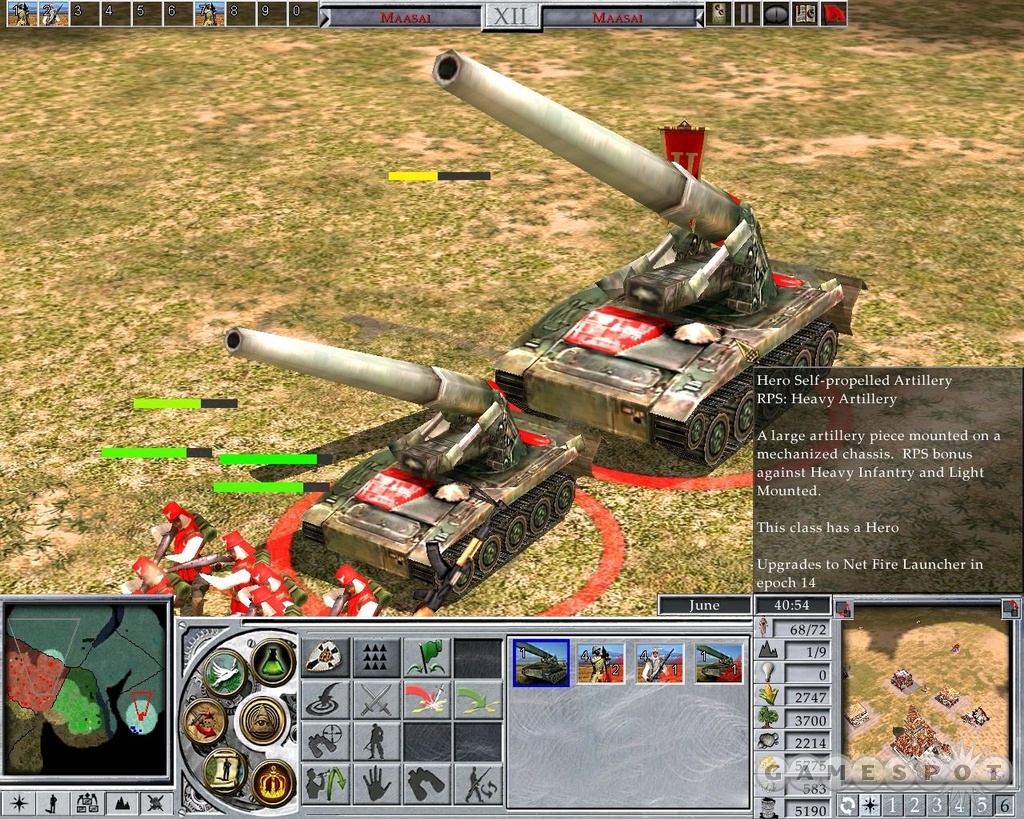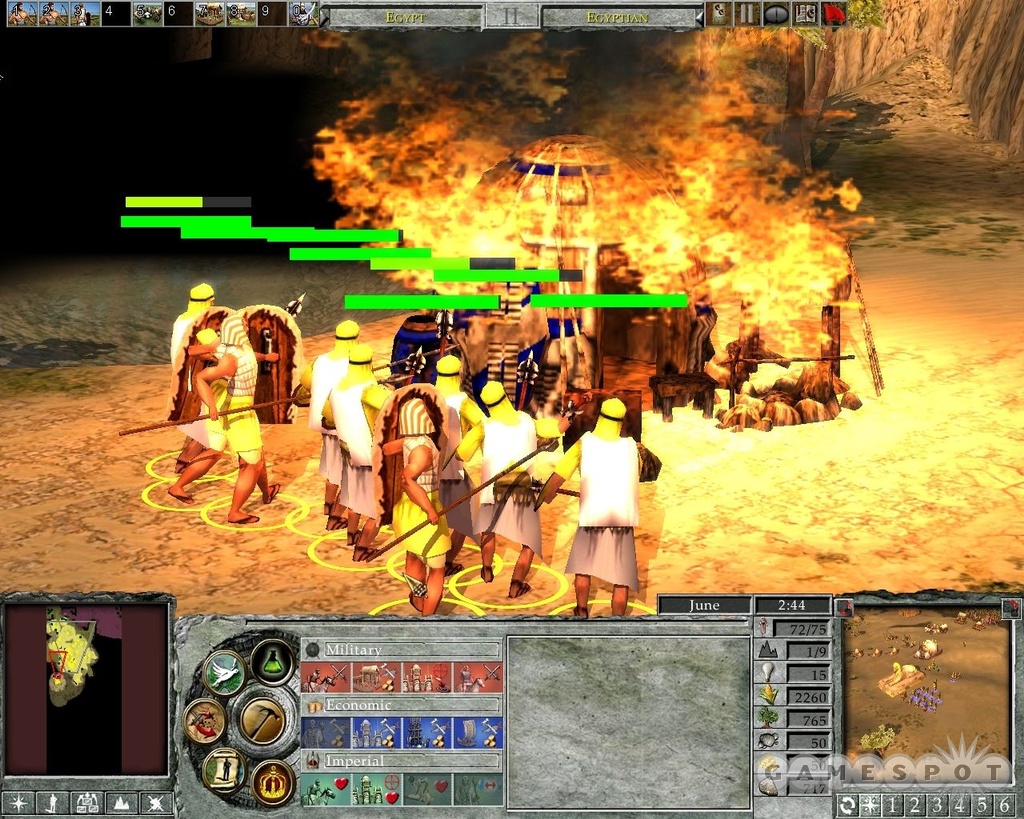Expansion packs for real-time strategy games are always a bit of a gamble. Sometimes you get great new content that both enhances and lengthens the original game. This might include a new campaign, a fresh faction or two, and maybe even some rule tweaks and new multiplayer modes of play. Other times, however, you get a disappointing collection of odds and ends that have been held back from the original game for the express purpose of selling them to gamers for extra cash six months or a year down the line. Expansions are almost always at one extreme or the other; they rarely seem to be simply mediocre. Until now, that is. Empire Earth II: The Art of Supremacy walks the line between new content and reheated leftovers, mixing intriguing additions, such as African tribes and a campaign at the dawn of Egyptian civilization, with bland accoutrements, such as the French civilization and multiplayer rules that nobody will ever use. The developers at Mad Doc Software balance every good feature in this expansion with something either uninspired or ill-advised.

Take the four new civilizations and campaigns, for instance. Incorporating the Maasai and Zulu tribes into the existing mix of 15 RTS-standard civs is absolutely inspired, as African civilizations aren't often brought to life in an RTS. The Maasai campaign is an innovative story about a war with an evil multinational corporation over a newly discovered energy resource in 2037, while the Zulu are featured in new historical "turning points" battles, which deal with the legendary battle of Rorke's Drift in 1879. And the new African region, which includes deserts, scrub plains, and lush jungles, is the setting for a campaign set at the dawn of Egyptian history.
But much of the African novelty is offset by the other two new civilizations, the French and the Russians, and their been-there, done-that Napoleonic campaign. These nations have been featured in nearly every historical RTS ever made and would probably have been in the original Empire Earth if they hadn't been held back for inclusion in this expansion. The same goes for the campaign, which pits the Russians defending against the French in a snowy struggle that any respectable strategy gamer has already fought a couple of hundred times. Mad Doc has included a civilization editor that allows you to create nations from scratch, but that's still no excuse to ship the expansion with boring additions like these.
Give and take is apparent in the two new skirmish/multiplayer modes as well. Tug of War is a great idea that spreads the battle over multiple maps (three, five, seven, or nine) that represent each side's home territory and the no-man's land between them. You start in neutral ground and try to drive the enemy back to its homeland through victories on one map after another. This leads to tense, quick bloodbaths or lengthy, epic conflicts, depending on how many maps you choose to fight over. Picking three maps raises the stakes, as a single loss forces you to battle for your life, while choosing nine maps usually leads to a drawn-out war with lots of ebb and flow, victories and retreats. The only drawback is that the overall campaign isn't quite seamless, as all units aren't transferred between maps (although progress through the epochs and on the tech tree is, so you don't have to start from scratch on each new map).
Territory Hotspots, on the other hand, is boring. This is a variation on regular Hotspots play from the original Empire Earth II, with the only difference being that the key locations here are revealed at the beginning of matches, and you win by controlling them for a set period of time. The game is supposed to mimic real-world victory conditions, where armies routinely win wars by conquering oil fields, ports, and the like. And it does accomplish this objective, although it plays out so close to the standard Hotspots mode that you have to wonder what the point is here.
Rule tweaks and additions in The Art of Supremacy are up and down as well. Heroes don't add much of anything, as units seem to jump to this status almost randomly during battles. The asymmetrical-resources toggle nicely mixes up resource allocation, although this seems like a more appropriate addition for a patch, not an expansion. Fealty mode in skirmish and multiplayer matches is interesting, as it adds a medieval-style lord-vassal relationship to give losing players a chance to stick around as underlings. The only problem is that this doesn't work well online, as most losing players don't want to stay in games. They typically choose the Viking-funeral route and go down in flames--or simply quit. So this mode doesn't seem to get much use.
Adding independent native tribes such as the Iroquois and the Olmec to maps makes more of a difference to gameplay, although it's hard to laud this feature too much as it sort of copies an innovation previously seen in Age of Empires III. Here, though, you can assimilate these groups and gain specific bonuses like warrior spirit, which lets you produce infantry faster, or fertility, which cranks up the population growth rate. Tribes add a strategic option to games as well, in that you have to decide between negotiating alliances with them to gain power-ups or wiping them off the map and seizing their buildings. It can often be a better idea to try and destroy tribes to prevent rival players from assimilating them than it is to bother with the often-tedious chore of lining them up as allies.
If you're a hardcore Empire Earth II fanatic, The Art of Supremacy is probably a must-buy. There are a reasonable number of enticing goodies in this package, and the new campaigns provide at least seven or eight hours of gameplay. More casual followers of the series might want to hold back for this one to hit the bargain bin, though, since there isn't anything here that could be considered essential, and the retail price is a rather steep $30.
